Additional notes (click to expand)
Horticulture
Erect to spreading tree 2-4m (6-12ft) high by 1.5-3m (5-10ft) wide, producing pinnate, yellow-green leaves, 40-90cm (16-36in) long, with 6-8 oblong-lanceolate shaped leaflets. Axillary corymbs, 10cm (4inch) across, to up to 20 golden yellow flowers, to 2cm (3/4in) across, are borne in late summer.
Brickell, C. (2003). A-Z Encyclopedia of Garden Plants. Dorling Kindersley. Vol. II p.624
Medicinal
The source of one of the best known of all herbal medicines – senokot (and senna pods and senna tea), introduced to European medicine (as Senna alexandrina from Egypt) by the Arabians. Every part of the plant contains anthraquinones which, if taken internally, act as a powerful laxative to treat constipation by stimulating the nerve cells of the large bowel. Gerard (1633) notes ‘it is a singular purging medicine’ with over a page on its uses. When used regularly the nerves to the large bowel may be destroyed, leaving a permanently dilated large bowel that never functions properly again. This is a plant which causes the condition it treats to become permanent. Additionally, with prolonged use, the lining of the bowel turns black, serum potassium levels may fall, resulting in cardiac irregularities and sometimes death. Coma, neuropathy and hepatitis have also been reported. It is advertised on television (the actor involved is seen to be depressed and bloated until she takes Senokot, after which she is happy - Hippocrates would have attributed this antidepressant effect to the plant's ability to purge her of the black melancholic humour present in her bowel motions). It is available without prescription or health warning against long-term use. What do you think? Lyte (1578) recommends it strongly for depression, but one might claim to be cured rather than take it again.
Oakeley, Dr. Henry F. (2013). Wellcome Library notes.
link
Medicinal uses
Uses supported by clinical data
Short-term use in occasional constipation (21–25).
Uses described in pharmacopoeias and in traditional systems
of medicine
None.
Uses described in folk medicine, not supported by experimental
or clinical data
As an expectorant, a wound dressing, an antidysenteric, and a carminative
agent; and for the treatment of gonorrhoea, skin diseases, dyspepsia, fever,
and haemorrhoids (11, 23, 25).Medicinal uses
Uses supported by clinical data
Short-term use in occasional constipation (21–25).
Uses described in pharmacopoeias and in traditional systems
of medicine
None.
Uses described in folk medicine, not supported by experimental
or clinical data
As an expectorant, a wound dressing, an antidysenteric, and a carminative
agent; and for the treatment of gonorrhoea, skin diseases, dyspepsia, fever,
and haemorrhoids (11, 23, 25).Medicinal uses
Uses supported by clinical data
Short-term use in occasional constipation (21–25).
Uses described in pharmacopoeias and in traditional systems
of medicine
None.
Uses described in folk medicine, not supported by experimental
or clinical data
As an expectorant, a wound dressing, an antidysenteric, and a carminative
agent; and for the treatment of gonorrhoea, skin diseases, dyspepsia, fever,
and haemorrhoids (11, 23, 25).
Contraindications
As with other stimulant laxatives, the drug is contraindicated in persons
with ileus, intestinal obstruction, and stenosis, atony, undiagnosed abdominal
symptoms, infl ammatory colonopathies, appendicitis, abdominal
pains of unknown cause, severe dehydration states with water and
electrolyte depletion, or chronic constipation (21, 30). Folium Sennae
should not be used in children under the age of 10 years.
WHO monographs on medicinal plants commonly used in the Newly Independent States (NIS). 2010. WHO, Geneva
It has Traditional Herbal Medicine Registration approval in the UK
There is a video by Dr Henry Oakeley
Videos from the garden
link
There is a Podcast by Prof Anthony Dayan
Garden podcasts
link
Text of a podcast by Prof Anthony Dayan
Podcast text - senna
link
Nomenclature
syn. Cassia corymbosa
Other use
video on Senna by Henry Oakeley
https://www.kaltura.com/index.php/extwidget/preview/partner_id/2012451/uiconf_id/33315081/embed/dynamic?&flashvars%5BstreamerType%5D=auto&flashvars%5BplaylistAPI.kpl0Id%5D=1_l4zcxw9e
Toxicity
When used regularly the nerves to the large bowel may be destroyed, leaving a permanently dilated large bowel that never functions properly again. This is a plant which causes the condition it treats to become permanent. Additionally, with prolonged use, the lining of the bowel turns black, serum potassium levels may fall, resulting in cardiac irregularities and sometimes death. Coma, neuropathy and hepatitis have also been reported.
Oakeley, Dr. Henry F. (2013). Wellcome Library notes.
link
Geographical distribution
- Southern America, Brazil
- Southern America, Southern South America, Argentina Northeast
- Southern America, Southern South America, Argentina Northwest
- Southern America, Southern South America, Uruguay
Podcast
Senna corymbosa (Lam.) Irwin & Barneby
Family: FABACEAEGenus: Senna
Species: corymbosa (Lam.) Irwin & Barneby
Common names: Senna, Argentine Senna
Pharmacopoeia Londinensis name: Senna
Distribution summary: Brazil, Argentina, Uruaguay
Habit: Shrub
Hardiness: H2 - Tender; cool or frost-free greenhouse
Garden status: Currently grown
Garden location: Plants in pots (POT)
Flowering months: August, September
Reason for growing: Medicinal, toxic
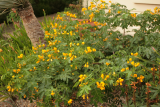



.JPG)
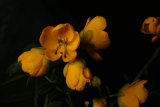

.JPG)
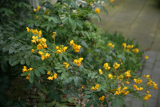
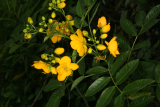
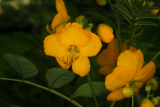
.JPG)
.JPG)
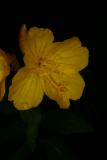
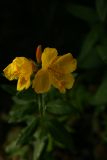

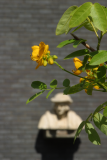
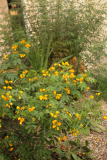
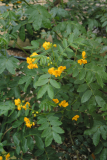

.JPG)
.JPG)
.JPG)
.JPG)
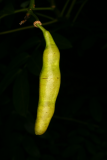
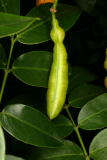
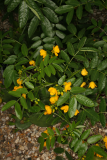
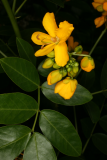
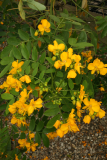
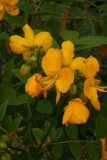
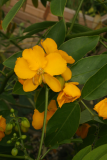
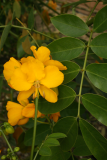

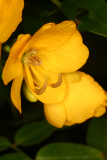

.JPG)